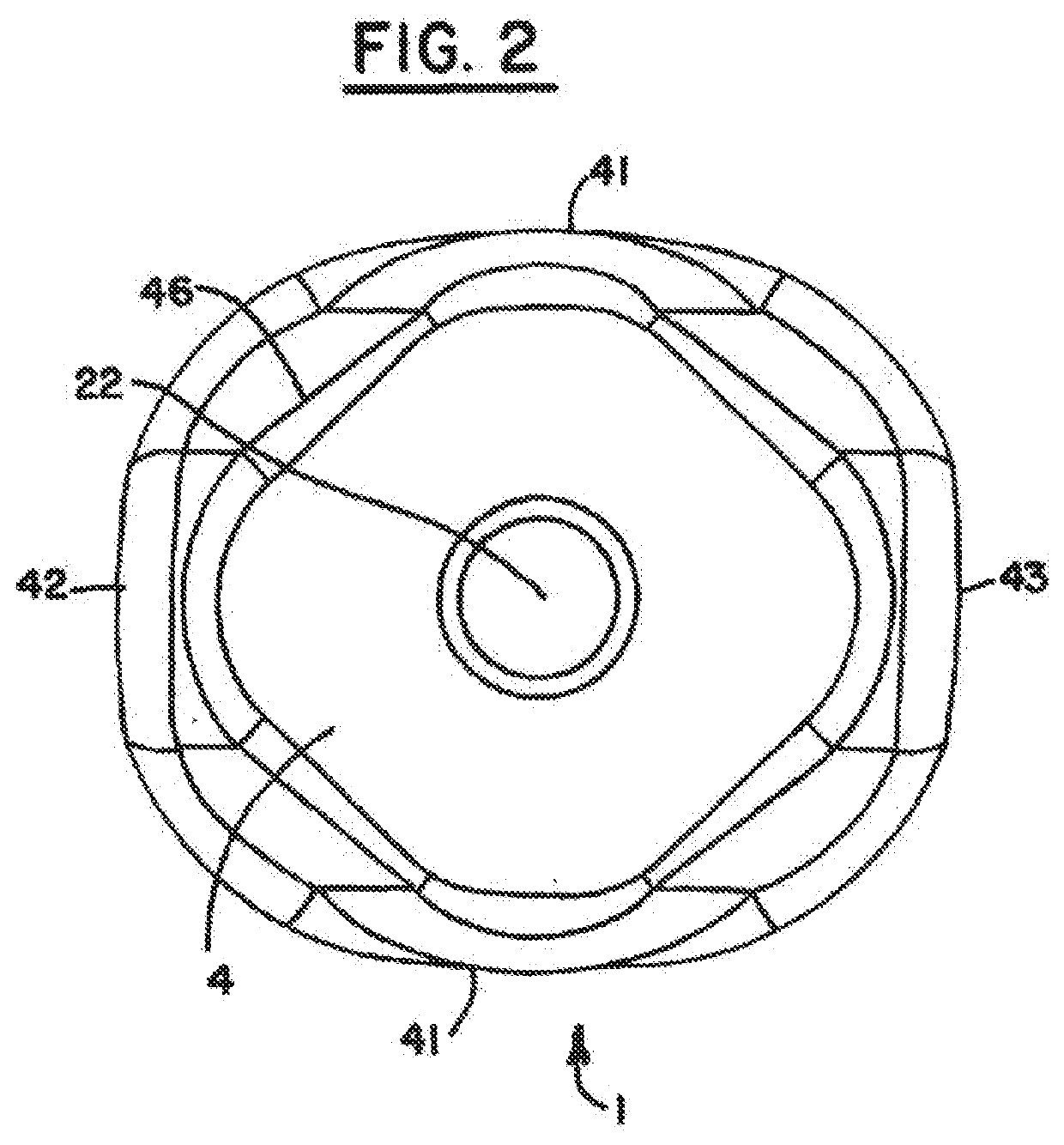Healing abutment system for configuring crown abutments at an implant site
a technology of abutment and abutment, which is applied in the field of healing abutment system, can solve the problems of gingival tissue maturation around, non-anatomical healing, and both aesthetic and mechanical drawbacks, and achieve the effect of improving the aesthetics of conventional implant dentistry
- Summary
- Abstract
- Description
- Claims
- Application Information
AI Technical Summary
Benefits of technology
Problems solved by technology
Method used
Image
Examples
Embodiment Construction
[0080]The present invention operates in conjunction with the anatomical healing abutment of U.S. Pat. No. 8,382,477, to the instant inventor, and incorporated herein by reference. The subject anatomical healing abutment 1 depicted in FIGS. 1-6 of the present application is a crucial part of the current inventive system, which is directed to modeling prosthetic abutments 201 to be used at the implant site 100 were the subject anatomical healing abutment 1 has been used to configure bone graft 30 and the surrounding gingiva 300.
[0081]An anatomical healing abutment 1, such as that described in U.S. Pat. No. 8,382,477 is an integral part of the present invention. A major benefit of an anatomical healing abutment 1 is that the surrounding bone graft 30 is contoured in such a manner that the surrounding gingiva 300 is ultimately configured to resemble that around the original extracted tooth. This is considered very desirable aesthetically, which is one major goal of the present invention...
PUM
 Login to View More
Login to View More Abstract
Description
Claims
Application Information
 Login to View More
Login to View More - R&D
- Intellectual Property
- Life Sciences
- Materials
- Tech Scout
- Unparalleled Data Quality
- Higher Quality Content
- 60% Fewer Hallucinations
Browse by: Latest US Patents, China's latest patents, Technical Efficacy Thesaurus, Application Domain, Technology Topic, Popular Technical Reports.
© 2025 PatSnap. All rights reserved.Legal|Privacy policy|Modern Slavery Act Transparency Statement|Sitemap|About US| Contact US: help@patsnap.com



